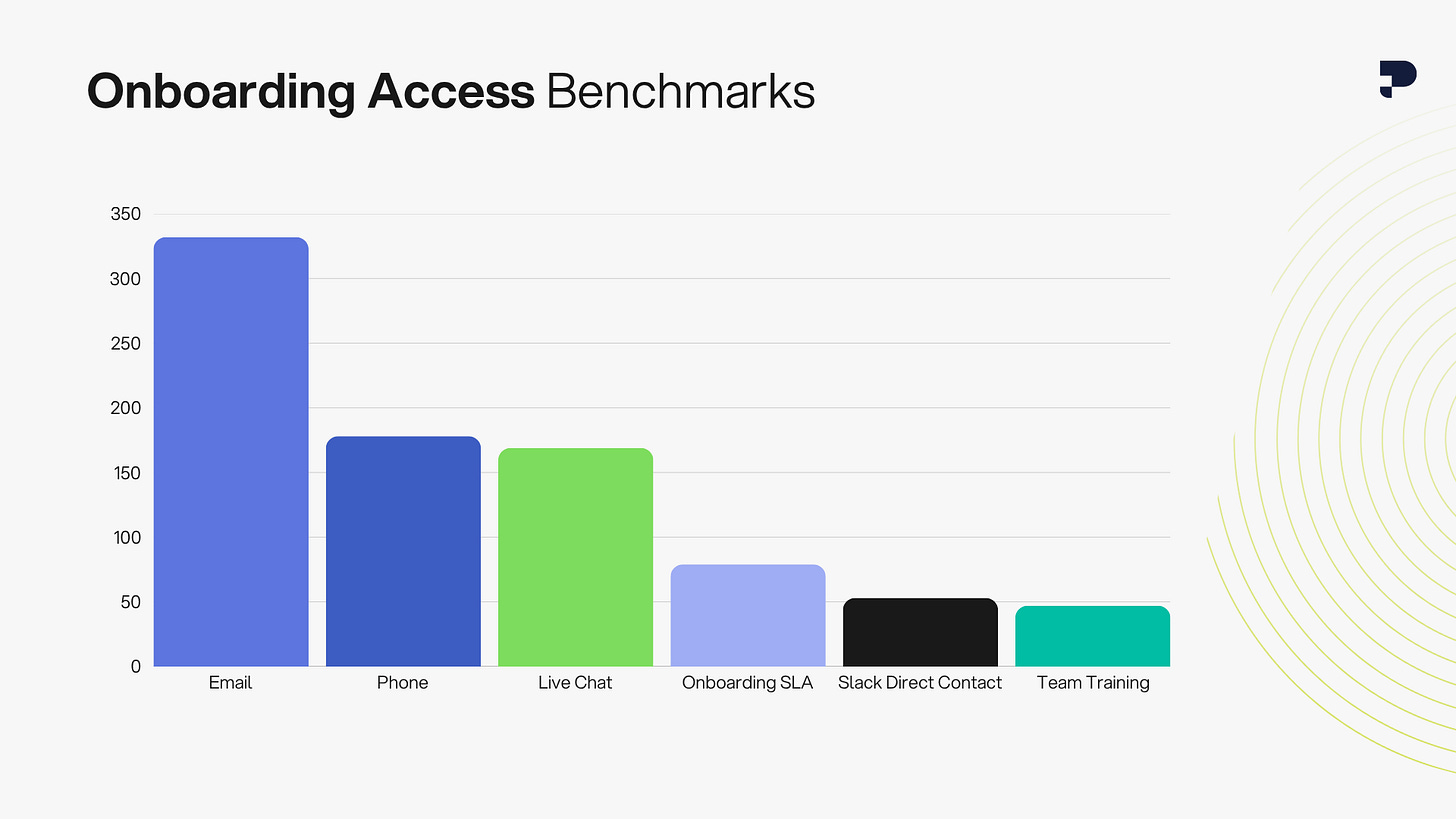Welcome back to Good Better Best!
Today we’re going deep on professional services in SaaS, including:
A framework for monetizing professional services
The current state across the wider SaaS landscape
Opportunities for SaaS builders to stand out
Download the full report for examples from leading SaaS companies.
Is your pricing model holding you back?
Product-led growth needs pricing that scales with value. That’s why usage-based pricing is gaining ground—85% of SaaS companies have already adopted it.
In this report, Metronome and Greyhound Capital break down why leaders across product and the C-suite are betting on UBP to drive expansion, customer alignment, and long-term profitability. Get data-backed insights from 100 SaaS companies on how (and why) they made the shift—and what they learned along the way.
Why Professional Services Matter More in the Age of AI
As AI continues to automate more product interactions, the role of human support is shifting from operational cost to competitive advantage. This dynamic is reshaping how SaaS companies think about professional services.
To bring structure to this evolving space, we partnered with Ulrik and the team at Willingness to Pay to develop a simple but flexible framework that helps SaaS leaders define, deliver, and monetize professional services more effectively.
First, we broke Professional Services into two categories:
Onboarding: how you help new customers get value from your product as quickly and smoothly as possible.
Support: how you provide ongoing assistance to customers when they encounter questions, issues, or roadblocks using your product.
Next we looked at each category on two axes:
Scope: What support delivers for the customer (e.g., product questions, bug-fixing, white glove support)
Access: How the customer can reach out to get help (e.g., channels, response time, cadence)
Onboarding: Packaging, Access, and Pricing Strategies
Let’s start with onboarding, where thoughtful packaging and access design can accelerate time-to-value, and where pricing strategies often reflect customer segmentation and readiness.
In practice, we found Dedicated Onboarding and Knowledge Bases to be the most common onboarding offerings. Surprisingly, Training Academies and Video Libraries, which offer low-lift strategies for asynchronous onboarding remain rare.
Opportunity: I’m bullish on video libraries in particular, and think it’s a great way to help downmarket/free customers get going with the product without burning too many CX calories (Clay does a great job of this).
On the access side, Email, Phone, and Live Chat remain the most popular channels. Anecdotally, Slack seems to be getting more common, and is a great way to signal that your company is an extension of your customers’ team.
Opportunity: Slack probably isn’t the right channel for all customer support, but could be a great way to stay close to new customers, or differentiate a premium onboarding experience. If you’re already using Slack internally, it’s worth considering as a way to differentiate your services from competitors.
For onboarding monetization, we found 3 common approaches:
Tiered Packages: Multiple onboarding levels (e.g., Self, Assisted, Professional) let users choose the amount of guidance they need and pay accordingly.
Bundled with Higher Plans: Premium onboarding is included in mid-to-top-tier subscriptions as added value.
One-Time Paid Add-Ons: Sold separately, often as “concierge” services, for customers who want extra support.
Support Services: Evolving Value and Monetization Models
Support services follow a similar trajectory but tend to offer clearer tiers—ranging from reactive basics to proactive, value-added offerings that can drive real differentiation.
In practice, we noticed a predictable trend:
Reactive services (Bug Fixes and Troubleshooting) are table-stakes
Proactive services (Proactive Monitoring, Workflow Optimization) are uncommon.
Opportunity: I’m particularly excited to see AI agents make it way easier to offer proactive services, and believe the companies that move in this direction sooner can drive meaningful differentiation by delivering way more value than competitors at a lower cost.
On the access side, email and live-chat are the most common channels for customer support. Phone support has become surprisingly rare.
Opportunity: I’m bullish on Community Forums and Slack, which lean into Community and Proximity respectively. These two channels can be used in parallel: Community Forums for all customers, and Slack as a Premium Support offering.
For support monetization, we found 4 common approaches:
Bundled with Subscriptions: Included in plan tiers; advanced support unlocked at higher levels.
Percentage of Subscription Spend: Charged as a percentage of the total subscription cost.
Flat Fee: Fixed price, independent of usage or tier.
Per Instance: Pay-as-you-go for each support request.
Your Service Strategy Cheat Sheet: Scope, Access, and Pricing
To put it all together, we’ve outlined a simple decision sequence you can use to define your service offerings, and choose the best path to monetization.
Determine which services you want to offer? (Support, Onboarding, Both)
Define the Scope of your services (how much do you want to offer?).
Decide how people access your services (e.g., live chat, email, video).
Then, decide how quickly people get access to your services.
From there, determine how you want to charge (one-time fee, recurring subscription, both).
Lastly, pressure test price points to gauge what makes sense.
If you’re looking to dive deeper into Professional Services monetization, we’re actively discussing emerging strategies in the PricingSaaS Community (we’ll also be sharing the recording from Ulrik’s latest webinar on the topic). And of course, check out the full report for examples of each of the monetization strategies outlines above.
How we can help when you’re ready
Pricing questions? Join the free PricingSaaS Community to get fast answers from pricing leaders.
Looking to level up? Check out our Resource Center for links to pricing and packaging research, webinars, and our free online course.
Working on pricing? Our SaaS Pricing Assessment delivers a clear roadmap to smarter pricing and packaging in 30 days.








